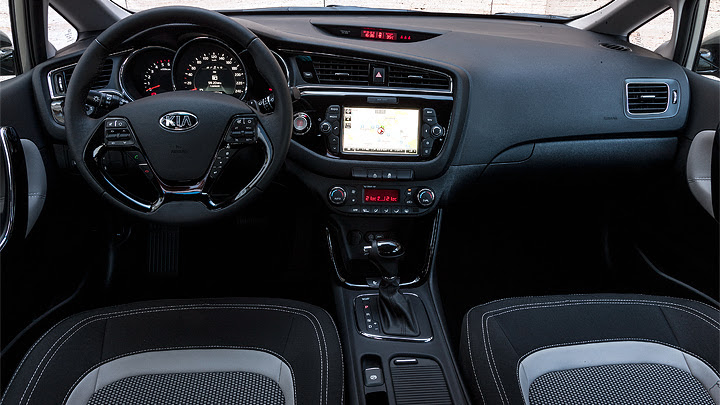
cee’d is the kind of car that did everything right, without going any further. Since it’s dedicated to Europe, it comes only as two and four-door hatchback and a station wagon – the former carries a coupé-ish silhouette, and there’s no sedan. The cabin stays always at the same level of the direct competitors when it comes to comfort and technology, the powertrain is efficient enough to meet the standards established by those, the customers and the regulations, and everything is wrapped in Kia’s current design language. This one is surely getting affected by the repetition, but it’s still good to look at. Having all that in mind, it’s easy to understand why cee’d, pro_cee’d and cee’d_SW have sold more than a million units since 2007.
Like it was mentioned, such résumé is the best explanation of why the automaker didn’t bother coming up with many visual tweaks. The front bumper is wider, and uses a new arrangement of air intakes and chrome inserts. The upper grille, in turn, pairs the signature tiger-inspired design to an oval-themed mesh. The rear fascia features a refreshed bumper, whose lower design varies with the body style. There are also new rear reflectors, and new wheel designs with either 16” or 17”. There are also sporty versions again, with the coupé getting the most “extreme” of them, GT. The others receive the lesser variation GT Line, although the visual additions don’t differ much. The hatchback also brings the efficiency-oriented EcoDynamics trim level.










Inside, the vehicles bring new color schemes, but Kia calls your attention through your ears: by doubling the amount of anti-vibration materials, you can expect the ride to be quieter and smoother, specially in the diesel versions. The equipment list, in turn, was increased with the latest technology must-haves. The new infotainment system included satellite-navigation, multiple services that use Internet connection, and functions such as road-sign detection, mostly for speed limits. The sporty variations combine the usual exclusive colors and materials to a GT Mode: pressing its button activates a synthesized sound generator, in order to enhance the engine noise. The latter also presents a new turbocharger and bigger brakes.
When it comes to powertrain, Kia’s biggest intention was to make the cee’d lineup follow Euro 6 standards. All its engines now comply with it, and also welcome a new option: the three-cylinder, turbocharged 1.0-liter will deliver either 98 hp or 118 hp, always with 127 lb-ft. Efficiency figures weren’t released yet, but the automaker claims it to become the cleanest option ever offered with this car. The other options are 1.4 and 1.6, using diesel and gasoline. These became a little cleaner and a little more powerful than before. One of them, the diesel-burner 1.6-liter GRDi, is now able to receive Kia’s very first double-clutch, semi-automatic transmission. The brand new cee’d family is already on sale in some parts of the continent.